Note: This website was automatically translated, so some terms or nuances may not be completely accurate.
The origins of modern Japanese science lie here. "Shimadzu Corporation Founding Memorial Museum"
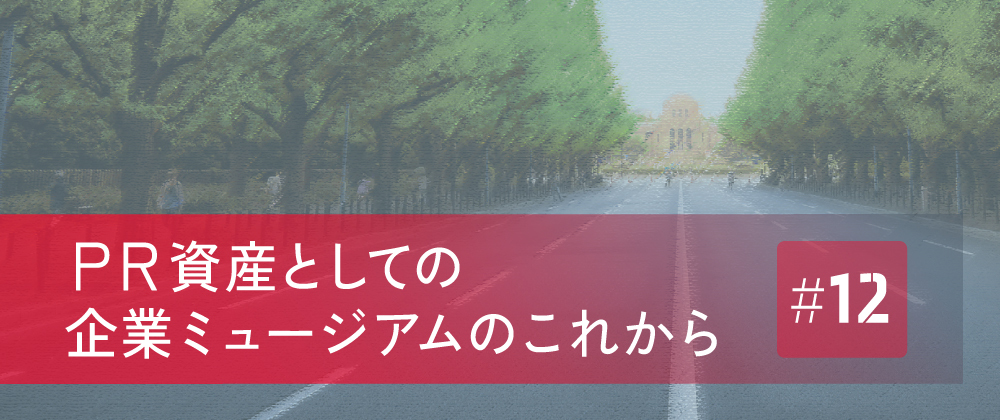
Corporate museums occupy a buffer zone spanning both the academic realm of "museums" and the business realm of "corporations." They are organizations that collaborate extensively with various corporate departments responsible for their operation, such as public relations, branding, advertising, and human resources. In this series, PR professionals will introduce various museums run by corporations, exploring their roles, functions, and potential.
The Shimadzu Corporation Founding Memorial Museum was established in Kyoto, the company's founding location, in 1975, marking Shimadzu's 100th anniversary. It stands as a pioneer among corporate museums. Many representatives from renowned companies visit to observe its museum management expertise. In 2002, the museum gained global attention when Koichi Tanaka, a researcher at the company, won the Nobel Prize in Chemistry. This time, we investigated how this B2B company, which rarely has direct contact with consumers, cultivates fans right here at the source of that story.
Reporting and Text: Reina Okuuchi (PR Consulting Dentsu Inc.)
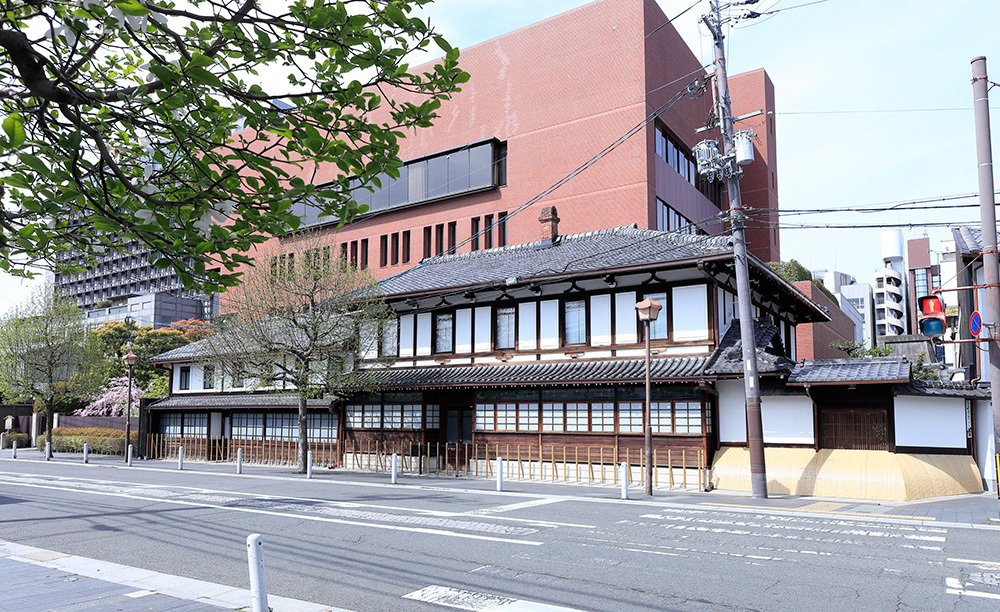
Exit the subway at Kyoto Shiyakusho-mae Station and head toward the Kamo River. Just before reaching it, walk upstream along the Takase River, which runs parallel to the Kamo. Near the river's source, you'll see a two-story wooden townhouse with a tile roof. This is the Shimadzu Corporation Founding Memorial Museum. The building, which strongly retains the appearance of the founding era, was designated a National Registered Tangible Cultural Property in 1999 and recognized as a Modern Industrial Heritage Site by the Ministry of Economy, Trade and Industry in 2007. Its blend of Japanese and Western elements, such as incorporating Western-style windows and stained glass, has received high praise in visitor surveys and travel information sites.
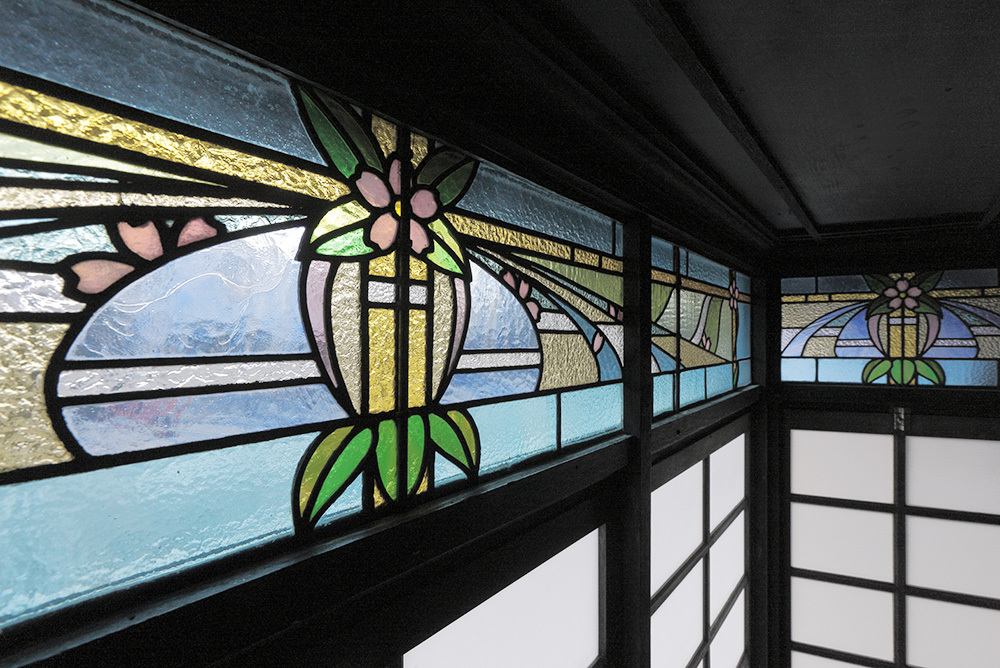
The building used as the main office and residence by the founder, Genzo Shimadzu I, and his eldest son, Genzo Shimadzu II (whose childhood name was Umejiro, but who took the name Genzo II upon his father's death), was reborn in 1975 as the "Shimadzu Corporation Founding Memorial Museum" to commemorate the company's 100th anniversary. The museum houses approximately 11,000 items, including scientific instruments, medical X-ray equipment, industrial machinery, and historical documents and materials manufactured and sold since the company's founding.
According to Ms. Misako Kawakatsu, Deputy Director of the Shimadzu Corporation Founding Memorial Museum, who assisted with this interview, the number of general visitors from both Japan and abroad increased following the 2002 Nobel Prize in Chemistry awarded to Mr. Koichi Tanaka (currently Executive Research Fellow). Following subsequent renovations, the museum expanded its focus beyond Shimadzu's history to include Kyoto's modernization and Japan's industrial history. This shift, combined with growing interest in modern industrial heritage, led to a steady annual increase in visitors. Before the COVID-19 pandemic, annual attendance reached approximately 16,000 people.
A Place Carrying the Founder's Vision
Shimadzu Corporation is a global company operating across a wide range of fields, primarily analytical and measuring instruments, medical equipment, industrial equipment, and aviation equipment. Its journey began 147 years ago when its founder, Genzo Shimadzu I, a Buddhist altar craftsman, started manufacturing scientific instruments, driven by the ideal that "the path Japan, a resource-poor nation, should take is to become a nation built on science."
The first Genzo was not only a manufacturer of instruments but also a man dedicated to advancing and promoting science and technology. He built relationships with diverse individuals, publishing scientific journals and organizing seminars to foster scientific education and awareness. Later, the second Genzo, eldest son of the first Genzo, carried on his father's legacy, driving successive innovations such as the development of X-ray equipment and storage batteries. The second-generation Genzo was hailed as Japan's Edison and was selected as one of "Japan's Ten Greatest Inventors" in 1930, making significant contributions to the advancement of science and industrial technology.
The museum's establishment was also driven by the then-president's sense of urgency upon realizing that employees who had worked alongside the second Genzo were disappearing. The intention was to pass on the aspirations of both Genzos and historical materials to the next generation of employees. The founder's spirit continues to be carried forward today through the corporate creed "Contributing to society through science and technology" and the management philosophy "Realizing our wish for the health of people and the planet."
Exhibits Designed for Enjoyment from a Free Perspective
Upon entering, visitors are greeted by the gentle, pleasant scent of incense. This is part of the hospitality, intended to help visitors feel calm and relaxed.
Proceeding through the entrance exhibition titled "Welcome to the Birthplace of the Company," one exhibit stands out prominently: the "Diana," a medical X-ray device launched in 1918. The year after Dr. Röntgen discovered X-rays, in 1896, the second-generation Genzo and others, together with professors from the Third Higher School (now Kyoto University), succeeded in taking X-ray photographs. By 1909, they had developed Japan's first domestically produced medical X-ray device. In an era dominated by imported equipment, the Diana pioneered the introduction of X-ray devices into private hospitals and significantly elevated the status of domestically produced X-ray equipment. It can be said to symbolize the dawn of modern medical equipment in Japan's modernization.
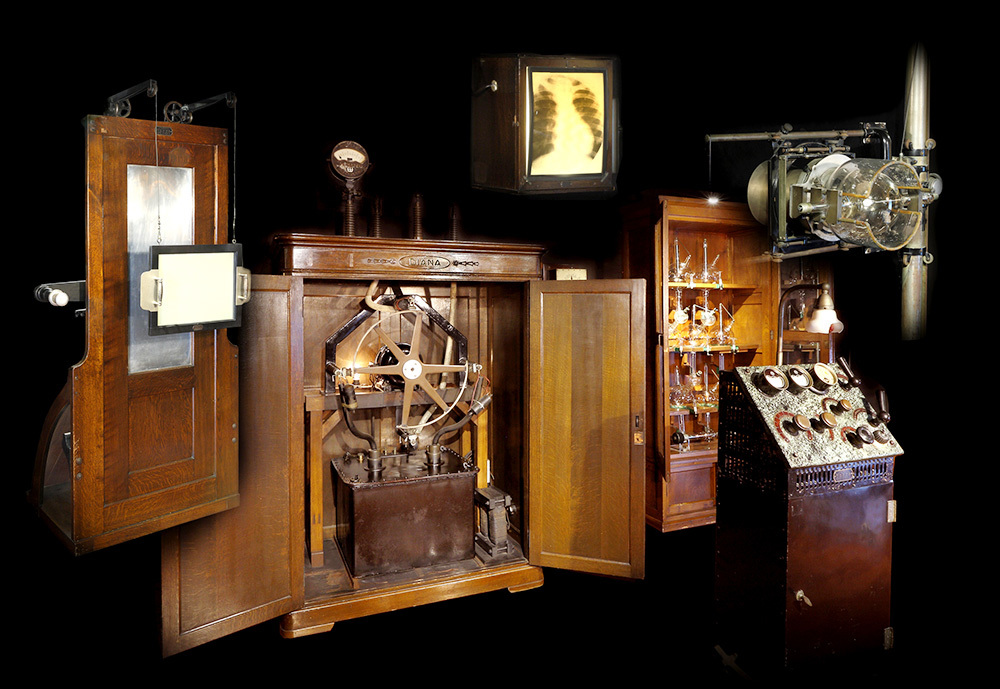
Also noteworthy is the display of admonitions titled "People Who Hinder Business," established by the second-generation Genzo. These 15 admonitions, based on his own experiences and hardships, reveal his character—demanding of both himself and others. Items like "People who don't put effort into anything they do" and "People who put off work until tomorrow" still resonate over 80 years later, reportedly causing many visitors to stop and read them intently.
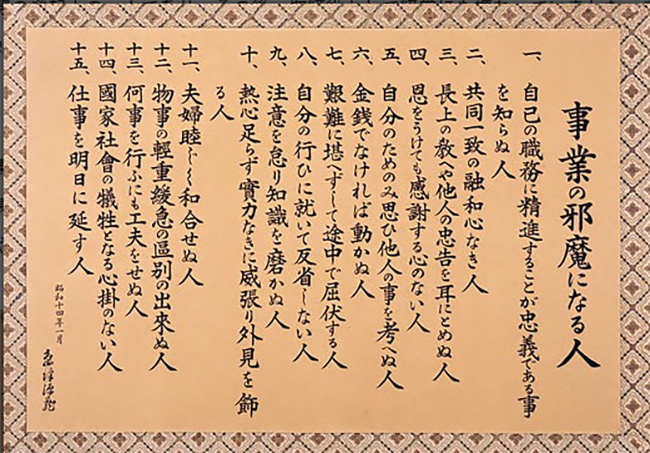
The second-floor exhibition space displays scientific instruments, mineral specimens, industrial equipment, and more, tracing Shimadzu Corporation's business history. Mr. Kawakatsu shared insights on the exhibition design: "We aim to present these instruments not only as products of Shimadzu's scientific thinking but also as objects worthy of interest from perspectives like the history of science education or their sculptural qualities."

A long line of scientific instruments, some so elegant they could be mistaken for art or antiques. A key aspect of the display is that each caption lists only the product name, without detailed explanations. This simplicity in presentation is intentional, to prevent the company from being perceived as distant or inaccessible due to complex products. This approach allows visitors to freely explore from their own perspectives. It enables diverse ways to enjoy the exhibits—such as looking up intriguing products on smartphones or appreciating their functional beauty—without feeling intimidated.
A display showcasing the talent of Genzo II is the Wimshurst magnetoscope (a device generating high voltage using electrostatic induction), completed in 1884 when he was just 15 years old—one of the earliest such devices in Japan, based on a single illustration. It later served as a power source for X-ray photography and became a catalyst for Shimadzu Corporation's diverse business expansion.
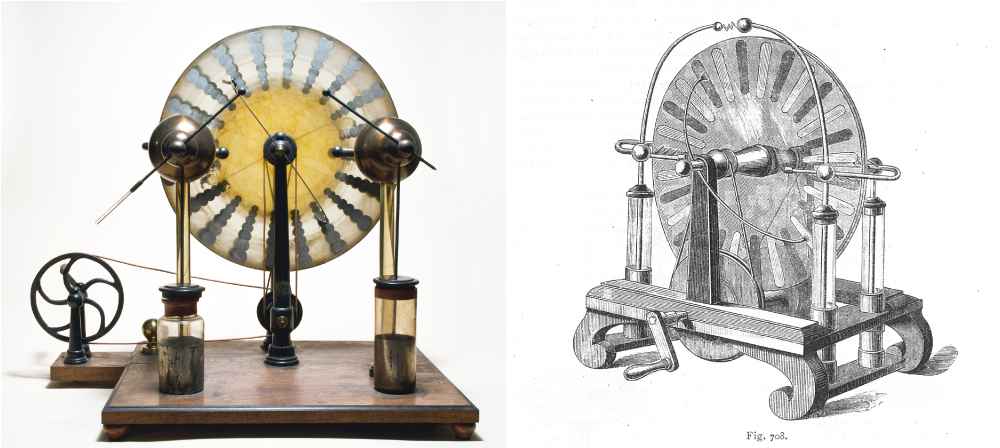
This also marked the origins of mannequin manufacturing in Kyoto.
Particularly surprising was the fact that Shimadzu Corporation once had a department called the Specimen Division that manufactured mannequins. Established in 1895, this division began producing plant models, mineral specimens, and anatomical models. When demand for Western-style clothing grew, they applied their anatomical model-making expertise to start manufacturing mannequins in-house. Combining high artistic quality and technical skill, Shimadzu mannequins became a major brand, dominating over 85% of the domestic market at its peak. While mannequin production is now handled by other companies, the roots of Kyoto's many existing mannequin makers trace back to Shimadzu Corporation.

Scientific Progress Seen in Products and Brochures
The final exhibition room features a wall-to-wall display of products, including the current mainstay analytical and measuring instruments, alongside numerous brochures from their launch periods. This allows visitors to grasp the history of product development that responded to Japan's modern industrialization. It's also a place where visitors often strike up conversations, reminiscing, "I used this product for research back in the day—it brings back memories."

An Experiment Corner That Captivates Both Adults and Children
The "Experiment Corner," where visitors can experience the wonders of science firsthand, is popular not only with children but also with adults. Through experiments demonstrating principles like collisions and how movies work, it embodies the importance of thinking scientifically – a core belief of Genzo Shimadzu and his son. Worksheets tailored for lower and upper elementary grades are provided, and children who check their answers receive commemorative gifts. This thoughtful approach ensures visiting children enjoy themselves, attracting many families with children during summer and winter breaks.

As a Hub for Building Enthusiasts
What significance does the Shimadzu Corporation Founding Memorial Museum hold for the company? We spoke with Shuko Kojima from the Public Relations Group, Corporate Communications Department at Shimadzu Corporation, who also assisted with this coverage. "About 60% of our visitors are customers, including business partners. While they may be familiar with Shimadzu's current products and initiatives, some are unaware of our foundational history. Furthermore, for the general public, Shimadzu products aren't typically used in the home, making it difficult for them to feel a personal connection. We hope this museum allows visitors to learn not just about complex technologies, but about our history of contributing to society. We would be grateful if they could resonate with Shimadzu's philosophy."
Deputy Director Kawakatsu shared his daily impressions of visitors: "When we can spark customers' interest and curiosity through Shimadzu's history, I feel a tangible sense of connection—a real closing of the distance." He noted that even many locals in Kyoto, while familiar with the Shimadzu name, often don't know what the company actually does.
DNA Passed Down to Overseas and Future Generations
With numerous overseas bases, Shimadzu Corporation connects its global employees to the founder's vision. The museum hosts online tours linking overseas locations and collaborates with facilities housing scientific instruments abroad for research and exhibitions. Feedback such as "I was inspired by the information about Genzo and his son's approach to manufacturing" and "I want to visit the museum in person" has been received, contributing to the motivation of local employees.
Furthermore, as part of activities to nurture the scientific spirit of the next generation, the museum visits elementary, junior high, and high schools to conduct workshops using historical scientific instruments. Through these activities, one can sense the legacy of Genzo's original vision—his dedication to promoting science and technology through publishing scientific instrument catalogs and scientific journals.

After the Interview
At the museum entrance, a bust of the founder, Genzo Shimadzu, stands alongside a monument inscribed with the characters "源遠流長" (Gen'en Ryūchō). This Chinese idiom expresses the wish that "though far removed from our founding days, our business will continue to flourish and expand like a river flowing downstream." Visiting the museum, I experienced firsthand the process of expanding and flourishing at the very source of Shimadzu Corporation, encountering numerous products and the stories behind them.

[Editor's Note] (From the Web Dentsu Inc. Editorial Department)
I found myself drawn to the admonition titled "People Who Hinder the Business," said to have been posted by the second-generation Genzo. While admonitions like "Do this. Do that" are common, I believe this is the first time I've seen one listing 15 specific types of people who are "unnecessary."
Great leaders don't say "Do this. Do that." They say, "You don't need to do this. You don't need to do that. I want you to focus entirely on this. I will protect and support your efforts with everything I have." When told that, people push themselves. They push and push, and before they know it, they've even won a Nobel Prize.
I suspect another strength of Shimadzu Corporation lies in the "Kyoto spirit." While Kyoto can feel like a place with high barriers, almost like "no first-time customers allowed," it also exudes a highly refined sense of respect for others. At first glance, this might seem completely unrelated to science, but I feel that this "consideration" and "attentiveness" form the foundation for incredible inventions and discoveries that no one could have imagined.
Was this article helpful?
Newsletter registration is here
We select and publish important news every day
For inquiries about this article
Back Numbers
Author

Reina Okuuchi
PR Consulting Dentsu Inc.
Senior Consultant
At the Planning & Consulting Bureau, I was involved in planning for domestic manufacturers and education-related clients. Since 2017, as the PR Manager at PR Consulting Dentsu Inc., I have promoted initiatives to invigorate internal communications, including external PR, launching an internal web newsletter, and planning and operating anniversary virtual events. My hobby is watching quiz shows. Certified PR Planner by the Japan Public Relations Association.




